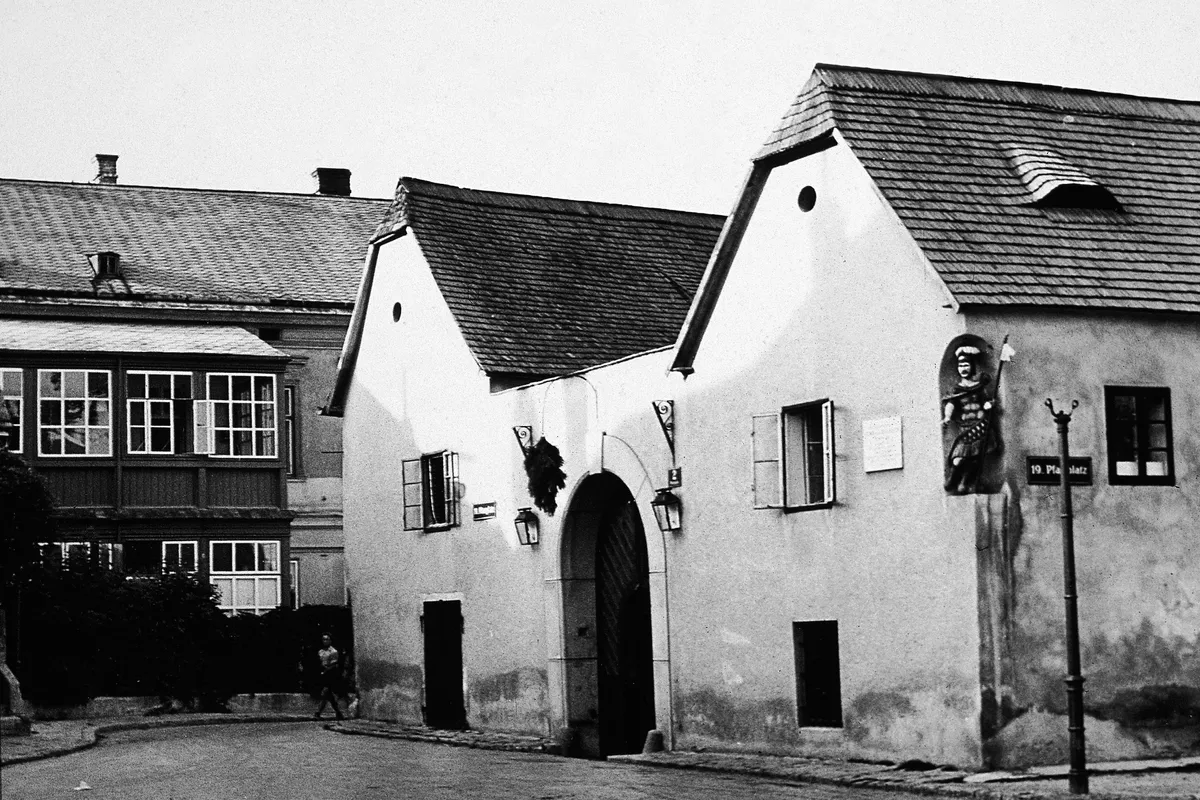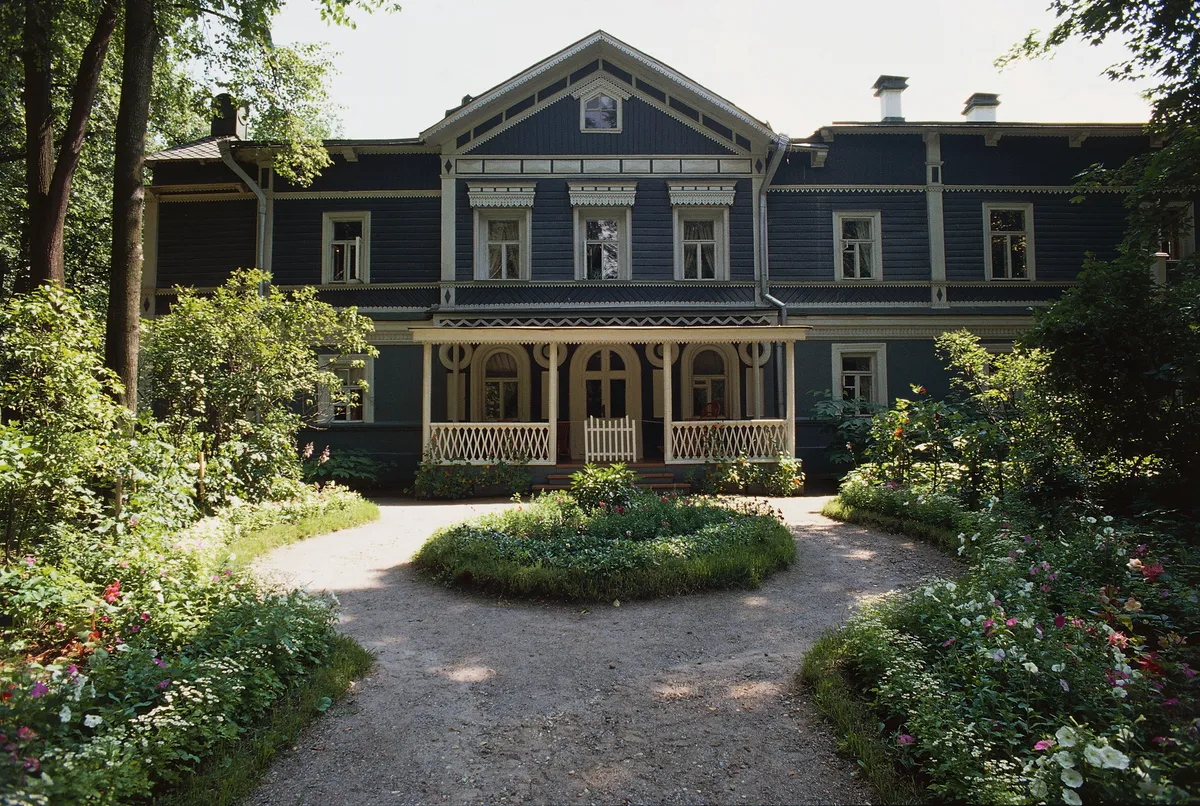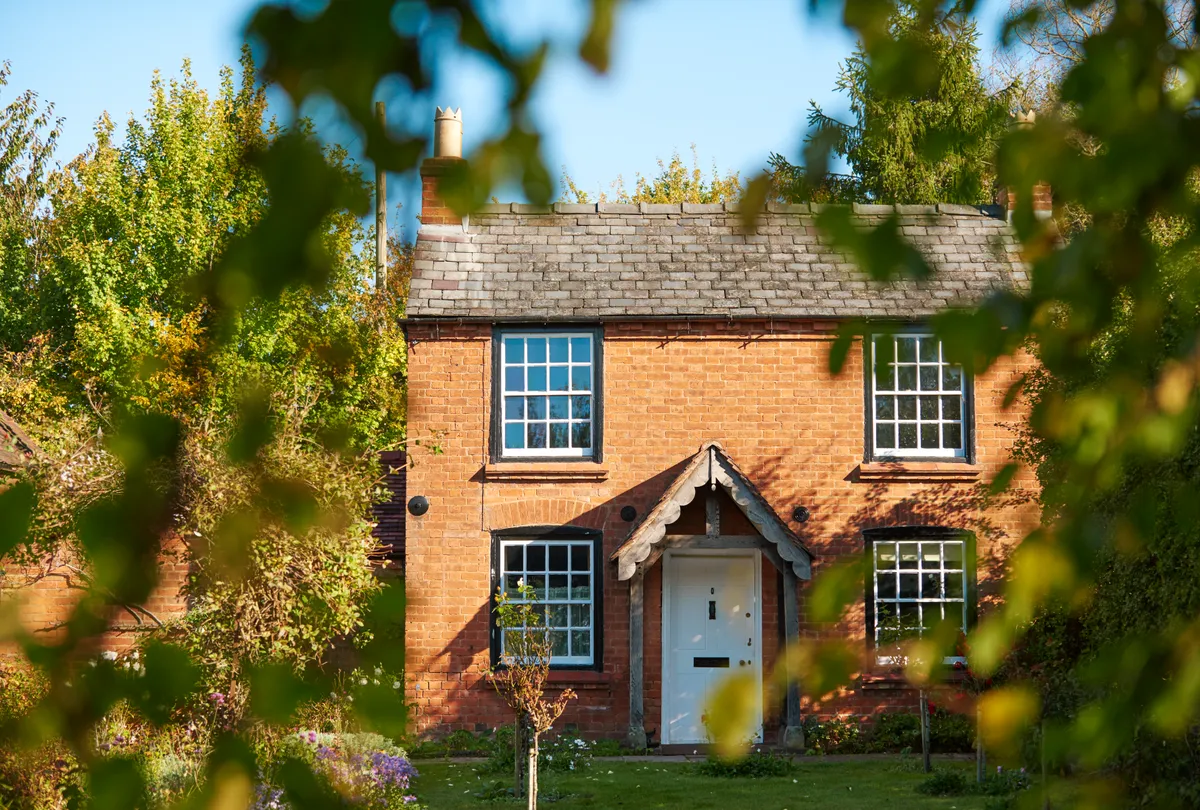Walls make a house, the designer marketing cliché tells us; decoration makes a home. Yet what makes a composer’s home worth visiting decades, or in some cases centuries, on from the famous subject’s death? Ideally it needs possessions accumulated over a lifetime, all in their proper place. Second best are traces of the creative workshop, or the environment essential to the composition of great masterpieces. Does that rule out birthplaces? Usually, though if – as in the special case of Elgar’s Broadheath – the childhood location proves a mecca for memorabilia and remains close to the essential spirit of place, that can be magical too. It’s also instructive to see a composer’s humble origins – as in the case of Haydn’s birthplace at Rohrau – but only truly valid if the composer returned in his last years, as did Janáček to his beloved Hukvaldy.
This, then, is a very personal selection. I can’t claim to have seen all the great sites: Grieg’s house in Bergen remains on the list, Puccini’s Torre del Lago and Martinů polička were undergoing restoration work when I tried to get there. If there are some oddities, indulge me: I can only try to persuade you that I felt something of the composer’s spirit even in those stranger instances.
Sibelius's home Ainola, Finland
A is for Ainola, home of Jean and Aino Sibelius and also my number one: not because it’s the most recent composer house I visited, nor because I spent four blissful hours there with only the enthusiastic curator for company. No, what counts is the length of time the Sibeliuses lived there together, from 1904 until the composer’s peaceful death in the downstairs bedroom on 20 September 1957 – Aino died 12 years later – and the comprehensiveness of the collection. Aino’s brother, Eero Järnefelt, was a fine artist, and several of his best paintings, including a haunting study of his sister, grace the walls. There’s also the library, the inherited neoclassical furniture, the gramophone collection and the Steinway grand piano which occasionally gets an airing before a privileged audience, presented to Sibelius by 144 generous admirers in 1915.
The humble home on a wooded hillock just outside the town of Järvenpää, half an hour’s commuter journey from Helsinki, was designed for Sibelius in 1904 by his friend Lars Sonck and enlarged in 1911. ‘There is nothing luxurious or opulent about Ainola,’ wrote Sibelius’s son-in-law Jussi Snellman. ‘Sibelius’s masterpieces are played beyond the oceans… but the master himself lives in a cabin with a shingle roof.’ You still expect Jean or Aino to walk in at any moment.
Read our reviews of the latest Sibelius recordings Find out more about Sibelius and his works
Beethoven's home Heiligenstadt, Austria

Vienna boasts countless composer house-museums; but none I’ve seen goes beyond facsimiles in cases and the occasional, usually feeble attempt at reconstruction. As for Beethoven, a wag commented that there ought to be a plaque on every house or inn in Austria he didn’t stay in; but the Heiligenstadt Testament House, despite or perhaps because of its forlornness, caught a certain quality when I visited on an unseasonal late summer morning of drizzly mist and fluttering dead leaves. A lugubrious old retainer ushered me into a bare room where I sat to read a well-presented copy of the famous testament in which, in 1802, Beethoven attempts to come to terms with his deafness.
It was my first acquaintance with the celebrated words, and of course I bought a copy at the end of my visit. I passed quickly over displays in further rooms; I’d had my vision. Avoiding the other Beethoven museum in the same building, I took a melancholy look up at the small windows from the neat little garden before winding my way back down the hill. Also recommended: a complementary visit to the theatre museum in the Lichnowsky Palace, which admits you to the ornate saloon in which the Symphony No. 3 (Eroica) was first performed.
Read our reviews of the latest Beethoven recordings
Find out more about Beethoven and his works
Tchaikovsky's home in Klin, Russia

A tormented wanderer like the Byronic hero portrayed in his Manfred Symphony, Tchaikovsky only really settled in a number of houses in the countryside beyond Moscow in his last years. His final refuge was a handsome timbered house in the woods at Klin, a market town which still supplies Moscow with produce from its smallholdings – as I discovered in 1993, travelling back to the capital on a packed train jammed between crates of mushrooms and chickens.
Our guide then was a charming conservatory student called Olga, clearly overawed by her temporary posting. She laid it on a bit thick about Tchaikovsky’s ‘love’ for Désirée Artôt, but had a lot to tell us about the selective landscapes and other paintings in the spacious main rooms, preserved after Tchaikovsky’s death by his brother Modest. Tchaikovsky’s Bekker grand piano has pride of place. Above a writing desk are a grand trio: Anton Rubinstein, below him a smaller Beethoven, and then below Beethoven, Glinka, founding father of Russian music. The simple bedroom is oddly touching, a painting entitled ‘Melancholy’ by an unknown artist hanging above the single bed and by the window a bare table at which Tchaikovsky composed the Pathétique Symphony.
Read our reviews of the latest Tchaikovsky recordings
Find out more about Tchaikovsky and his works
Wagner's Villa Wesendonck’s park, Rietberg, Zurich, Switzerland
The Villa Wahnfried at Bayreuth seems the obvious candidate here. But it was reconstructed after bombing in 1945 and when I visited with the crowds, it still felt tainted by post-war associations. How different is the idyllic Rietberg, above the lake in a prosperous district of Zurich. It was here, under the patronage of Otto Wesendonck and his wife Mathilde, that Wagner began work on arguably the most influential composition in western music, Tristan und Isolde, and set five of Mathilde’s poems as the Wesendonck Lieder.
His composing house, on the other side of the cobbled street to the Villa Wesendonck, no longer exists; in its place is the extravagant Villa Rieter, its grounds used for summer open-air chamber music recitals, while the resplendent Wesendonck mansion now houses an outstanding ethnographical collection, the Museum Rietberg. So why, if your interest is Wagnerian, make the pilgrimage? Because the Villa Wesendonck’s park is the most beautiful I know in any city, with its avenues of trees and its views across to the distant mountains. If you insist on a house museum, you can always take the train to Lucerne and the Tribschen villa where Wagner staged a domestic premiere of the Siegfried Idyll written for his beloved Cosima.
Read more reviews of the latest Wagner recordings here
Find out more about Wagner and his works here
Janáček's home in Hukvaldy & Brno, Czech Rep.
Like Elgar, whose western hills have so much in common with the gentle rolling landscape of north east Moravia, Janáček returned to familiar territory. He was born in the former schoolhouse of Hukvaldy, where a plaque now stands; it was while walking in his beloved woods near the Hukvaldy house he had bought from his brother’s widow in 1921 that he caught the chill that led to his death on 12 August 1928. The house is one of several lovingly tended Janáček memorials, a light and airy residence which includes much handsome furniture, including the lectern at which Janáček used to compose standing up.
Nearly every building in the tiny village of Hukvaldy has some significance, but it is the wooded castle park of the Olomouc Archbishop which makes the pilgrimage so special. Here Janáček ‘saw’ the vixen of his best-loved opera with her cubs, and in 1959 the local huntsman and foresters clubbed together to erect a pretty statue of his perkiest heroine. You’ll probably reach Hukvaldy from the city of Brno, where you shouldn’t fail to visit the tiny cottage housing Janáček’s grand piano behind the organ school where the composer and his wife spent much of their time.
Find out more about Janáček and his works
Read our reviews of the latest Janáček recordings
Haydn and Liszt's homes in Eisenstadt, Austria
In Austria’s wine-rich Burgenland region close to the Hungarian border, Eisenstadt may ring more bells as Esterházy, the enormous palace where Haydn served from 1766 until 1790. The pretty house situated near the massive palace at Klostergasse 82 (now Joseph-Haydn-Gasse 21), which Haydn bought in 1766, is now one of those efficient but rather overdone museums at which Austria excels. Enjoy the courtyard and get what you can out of the authentic instruments and manuscripts in the chronologically ordered rooms, but make time for Haydn’s nearby herb garden, his mausoleum in the Bergkirche and the sumptuous palace hall where concerts are now a tourist staple.
Read our reviews of the latest Haydn recordings
Find out more about Haydn and his work
For an authentic sense of a composer’s living conditions, though, visit Eisenstadt’s handsome Landesmuseum. Here, immaculately transferred from Vienna’s Schottenhof, is the ‘Blauer Salon’ of Franz Liszt, whose father played in the Esterházy Court Orchestra until he was transferred to shepherding duties on the Esterházy estate at Raiding, 30 miles from the town. Here, in a whitewashed cottage now also a museum, the composer was born in 1811. A monument in Eisenstadt claims him as a ‘true son of Burgenland’, but the blue salon shows how far he advanced, in cosmopolitan terms, from his humble roots.
Find out more about Liszt and his works
Read our reviews of the latest Liszt recordings
www.burgenland.at/landesmuseum
Elgar's home Broadheath, Worcestershire, England

I came to Broadheath as a piping treble, singing with my visiting local choir in Worcester Cathedral, before I knew what a great international figure Elgar was. I returned while conducting summer school students around Elgar country, spending blissful hours with the red volume Alice Stuart-Wortley had bound of the original sketches for the Second Symphony (research at the Birthplace Museum is still possible, but you now have to pay). I haven’t been back since Elgariana became big business and they added an Elgar Centre in 2000; I can’t imagine the tiny place so transformed. But they still have the study reconstructed in the cottage, including the gramophone on which the dying composer listened to the latest recordings of his music, and there are his microscope, his golf clubs and his cycling maps.
It’s perhaps a pity that not one of the grander houses Elgar occupied during his adult life remains – if it remains at all – as it was inside. But don’t fail to travel from Broadheath to the Malvern Hills, preferably walking from Great Malvern to the remote Birchwood farmhouse where Elgar heard the ‘summer wind… among the lofty pines’ as he composed Gerontius and visiting the humble grave in the Catholic churchyard. The trees and hills still sing his music.
Read our reviews of the latest Elgar recordings here
Find out more about Elgar and his works here
Verdi's home in Busseto, Italy
Here’s another countryman who returned to cultivate his native soil in the full flush of genius. Just as Janáček played the woodsman in Hukvaldy, Verdi liked to oversee the management of the estate at Sant’Agata, which he bought in 1848 and where he was to spend the settled part of the rest of his life. He planted a now very handsome avenue of plane trees leading from the much-extended house to his fields, had a lake constructed and installed a steam engine to help water his lawns.
Impressions of the Villa Verdi, even in midsummer, are of rather gloomy Victoriana; but it probably made sense to have the rooms so dark in hot weather and blinding sunshine. You can see the piano on which always sat the score of Mozart’s Don Giovanni and contents of the Milan hotel room where Verdi died in 1901. Don’t spend all your time here; it’s worth making a leisurely progress through the flatlands of the Po valley from the inn in Roncole Busseto where Verdi may have been born and stopping off at the pretty town of Busseto with its 300-seat opera house and the palazzo where Verdi lived with his not-then-wife, Giuseppina Strepponi, before settling down at his dream villa-farm.
Read our reviews of the latest Verdi recordings
Find out more about Verdi and his works
Szymanowski's home in Zakopane, Poland
Poland’s favourite mountain resort had a lifelong appeal for its most famous 20th-century composer. It became a necessity for the health of the tubercular 47-year-old Szymanowski, though ironically doctors decided that Zakopane’s severe climate would hasten the advanced stages of the disease and he died, worn out by a punishing tour schedule, in Lausanne. Between 1930 and 1935, though, Zakopane saw the completion of Harnasie, Szymanowski's great ballet based on the folk music of the surrounding Tatra Mountains, and several other late scores including Symphony No. 4 and the dreamlike Violin Concerto No. 2.
Villa Atma, built in 1890 in a romanticised version of highland lodgings, still preserves a rustic homeliness similar to the homes of JanáΩek and Sibelius. Yet it’s full of sophisticated reminders of Szymanowski’s pan-European sympathies and in the reconstructed study, alongside photos of two great supporters, pianist Artur Rubinstein and conductor Grzegorz Fitelberg, you can see pictures of Serge Lifar, the dancer who starred in the first Paris performance of Harnasie – who had become the much older Szymanowski’s lover at 16.
Read our reviews of the latest Szymanowski recordings
Scriabin's home in Moscow, Russia
Russians always do their great men proud in terms of house-museums, and each is tended by a devoted, if sometimes ferocious, guardian. After Tchaikovsky’s house, an obvious leader, it was difficult to choose between the Alexander Scriabin Museum in Moscow and the apartment of the Rimsky-Korsakovs in St Petersburg, which has a double study for husband and wife.
I chose the former, in a bustling part of Moscow off the Arbat, for two reasons. One is that I was lucky enough to experience an evening piano recital there – not, admittedly, on the Bechstein grand which Scriabin used to compose his strange late masterpieces from 1912 to 1915, but still, in close proximity to the master’s workshop. The other is that here you can see the colour keyboard constructed by the physicist Alexander Moser for the symphonic poem Prometheus. The modest little circle of 12 coloured lamps, one for each key, on a wooden base captures Scriabin’s hermetically sealed world.
Find out more about Scriabin and his works